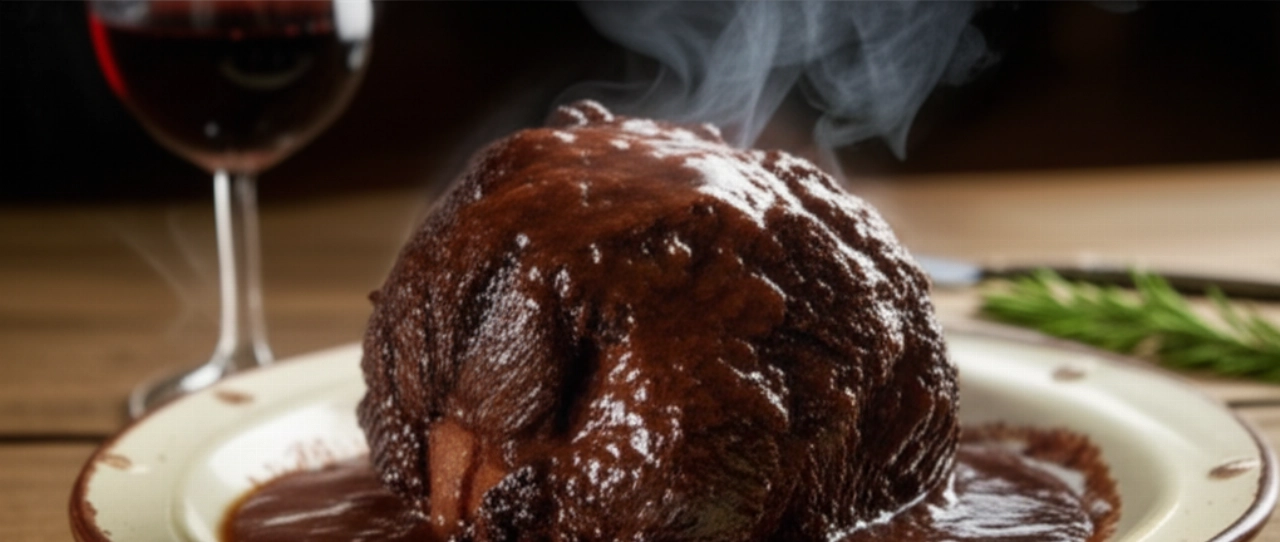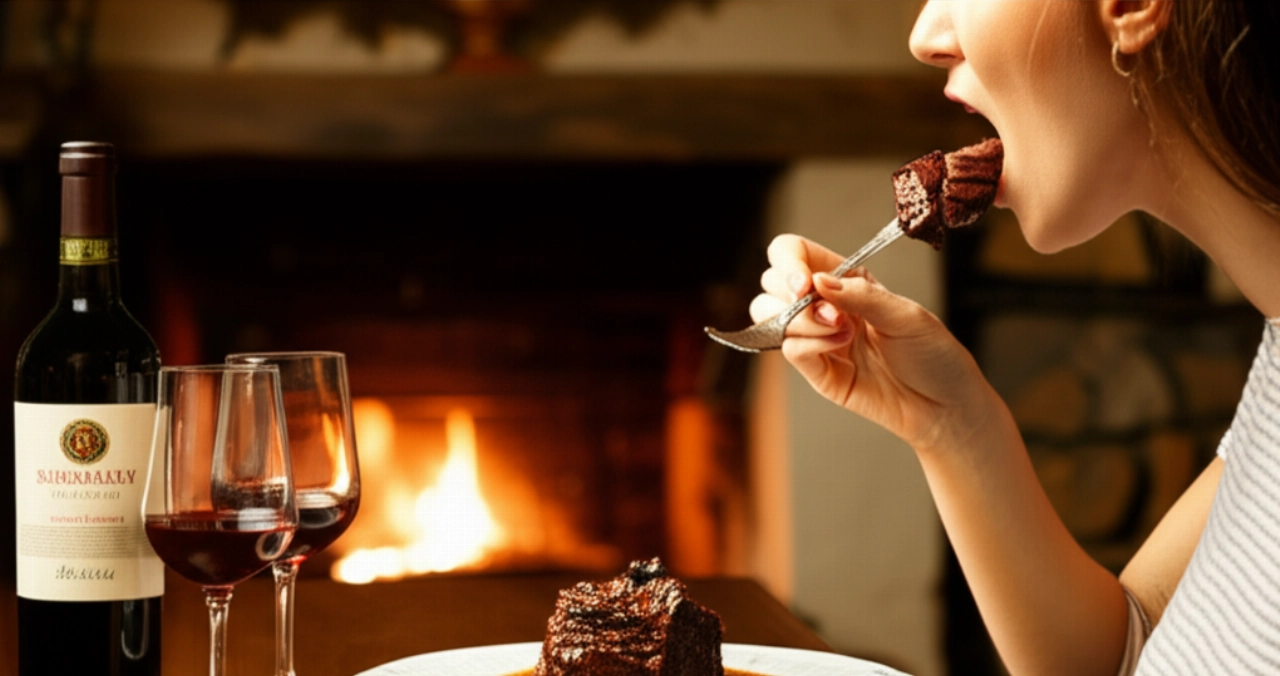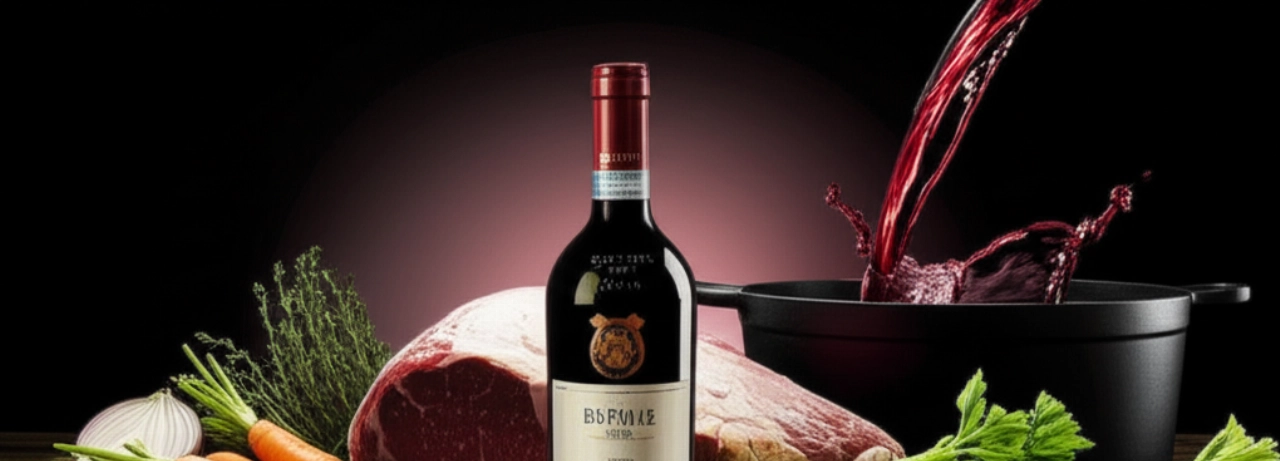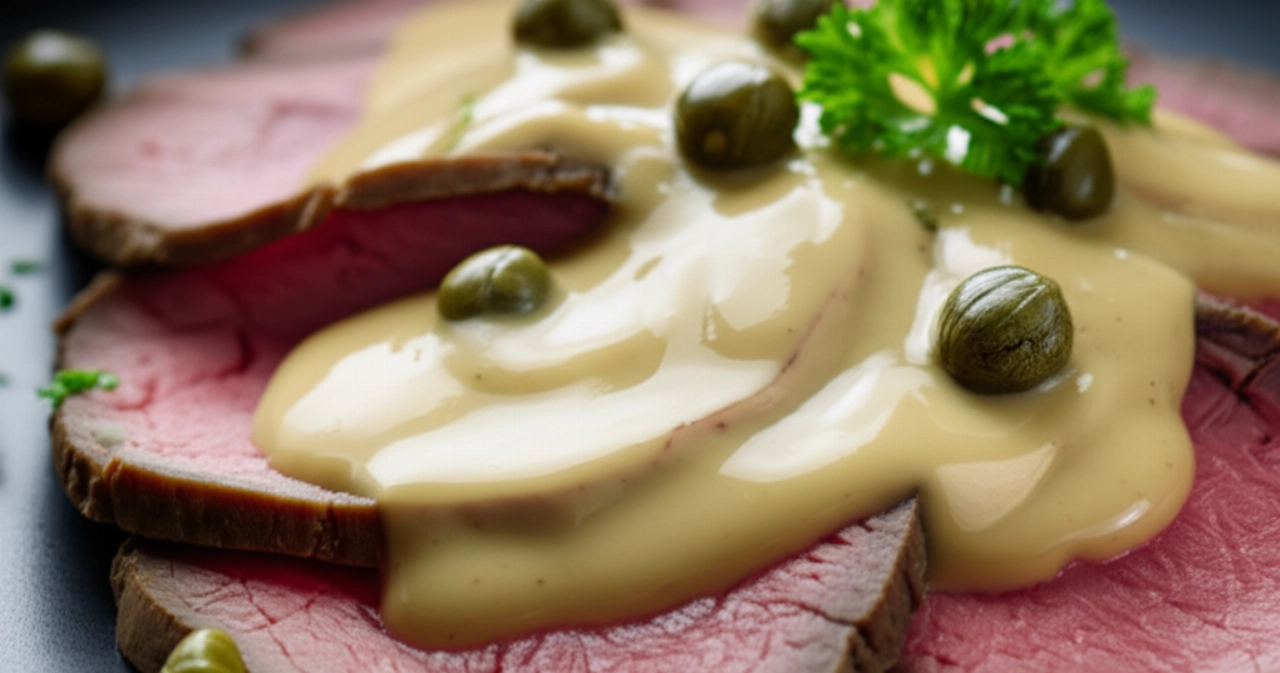Imagine bringing to the table a dish that smells of history, a warm and enveloping embrace that melts in your mouth at the first taste. We're talking about Barolo Braised Beef, a masterpiece of Piedmontese cuisine that, if done to perfection, becomes an unforgettable culinary experience. But let's be honest, the idea of preparing it can be a bit daunting, right?
Too often, braised beef can turn out stringy, dry, or with a sauce that doesn't do justice to the nobility of the meat and wine. The fear of wasting a prized cut of meat and an excellent Barolo is a thought that can deter even the most adventurous cook.
Don't worry, you're in the right place! Here at Search Recipes, your trusted kitchen, you won't just find a list of ingredients. I'll take you by the hand and guide you step by step, revealing all the secrets for a Barolo Braised Beef that will not only impress your guests but will guarantee meat so tender it can be cut with a spoon, and a thick, aromatic sauce, perfect for the final "scarpetta" (mopping up with bread). Success is guaranteed, grandma's (and chef's) word!

Ingredients for a Perfect Barolo Braised Beef: The Choice That Makes the Difference
The magic of a braised dish begins with the selection of ingredients. It's not just a list, but a symphony of flavors that, wisely combined, give life to a sublime dish.
- The Meat: The heart of your braised beef. For an excellent result, choose a cut of beef suitable for long cooking, such as silverside, brisket point, chuck roll, or beef cheek. These cuts, rich in connective tissue, transform into incredible tenderness with slow cooking. Ask your trusted butcher for a piece of about 1-1.2 kg, tied, to maintain its shape during cooking.
- The Wine: The undisputed protagonist. A Barolo DOCG is a must. Don't skimp on quality: the wine is the soul of the sauce, and its aroma will concentrate in the dish. If you don't have Barolo, a Nebbiolo or another robust and well-structured Piedmontese red can be an alternative, but Barolo is irreplaceable for authenticity.
- Vegetables for the Soffritto: The aromatic base. You'll need 1 large carrot, 1 celery stalk, 1 golden onion. Cut them into regular cubes (mirepoix) for an even release of aromas.
- The Aromatics: An enveloping bouquet. 2-3 bay leaves, a few sprigs of fresh rosemary, 5-6 juniper berries (slightly crushed), 2-3 cloves. These will add depth and complexity to your sauce.
- The Broth: The nourishing liquid. About 500 ml of hot beef broth (or vegetable, if you prefer a more delicate flavor). Make it at home if you can, it will make a huge difference.
- Extra Virgin Olive Oil: For browning. A good oil, delicate but flavorful.
- Butter: A touch of softness. A knob of butter for the initial browning, for a rounder flavor.
- Salt and Black Pepper: Essential for enhancing flavors.
- All-purpose Flour: One tablespoon, to lightly flour the meat and help thicken the sauce.

3 Common Mistakes in Barolo Braised Beef (and How to Avoid Them)
Even the most experienced cooks can fall into these traps. Knowing them is the first step to a perfect braised dish!
- Not Browning the Meat Properly: This is a fatal mistake! If the meat isn't well-sealed on all sides, it will lose its juices during cooking, resulting in dry and less flavorful meat.
The Secret: Use a heavy-bottomed pot and bring it to a high temperature. Add oil and butter and brown the meat on every side until you get a golden and uniform crust. This process, called "the Maillard reaction," creates complex flavors and seals the juices inside.
- Using Low-Quality Wine: "It's just for cooking, any red will do." Wrong! The wine is the ingredient that gives the dish its name and defines its character. A poor-quality wine will leave a bitter or flat aftertaste.
The Secret: Choose a Barolo you'd happily drink. Its complex bouquet and robust structure will transfer to the sauce, giving you a rich and deep culinary experience. Don't waste good Barolo on marinating, but use it for cooking.
- Rushing the Process: Braised beef is the king of slow cooking. Trying to speed up the process means compromising the tenderness of the meat and the depth of the sauce.
The Secret: Patience is your best friend. Cooking over a low, constant heat for hours allows the connective tissue in the meat to slowly dissolve, transforming it into a delicacy that falls apart at the touch. Resist the temptation to turn up the heat!

The Chef's Touch: The Secret to Melt-in-Your-Mouth Braised Beef
This is the advice a seasoned Piedmontese chef, a true master of braised dishes, passed down to me. It's a small gesture that makes a huge difference.
After marinating the meat in Barolo with vegetables and aromatics for at least 12-24 hours in the refrigerator, before browning it, drain it well and pat it dry with paper towels. Not only that, but let it rest at room temperature for at least an hour. This step is crucial for two reasons:
- Perfect Browning: Dry, room-temperature meat browns better and faster, creating that flavorful crust that seals in the juices. If the meat is cold and damp, it will tend to "boil" rather than brown.
- Uniform Cooking: Bringing the meat to room temperature avoids thermal shock when you put it in the pot, ensuring more uniform cooking and superior final tenderness.
Another little trick: don't throw away the marinade! Strain the wine and vegetables. We'll use the wine for cooking and the vegetables to enrich the sauce after browning.
Let's Prepare Barolo Braised Beef Together: The Step-by-Step Guide
Let's get cooking! Follow each step carefully, and success will be guaranteed.
Phase 1: The Marinade (The Night Before)
- Prepare the meat: If your piece of meat isn't already tied, tie it with kitchen twine to maintain its shape during cooking.
- Prepare the marinade: In a large bowl or a resealable food bag, combine the meat, Barolo, soffritto vegetables (roughly chopped carrot, celery, onion), bay leaves, rosemary, juniper berries, and cloves.
- Let it rest: Ensure the meat is completely submerged in the wine. Cover and refrigerate for at least 12 hours, ideally 24 hours. Turn the meat halfway through for even marinating.
Phase 2: The Preparation (The Next Day)
- Drain and pat the meat dry: Remove the meat from the marinade. Strain the marinade liquid and set aside both the wine and the vegetables and aromatics. Pat the meat very dry with paper towels and let it rest at room temperature for at least an hour.
- Light flouring: Lightly flour the meat on all sides with all-purpose flour, shaking off any excess. This will help create a crust and thicken the sauce.
- Perfect browning: In a large, heavy-bottomed pot (a cast-iron Dutch oven is ideal), heat a drizzle of extra virgin olive oil and a knob of butter over medium-high heat. When the butter is melted and foamy, brown the meat on all sides until it's well-golden and forms a uniform crust. This will take about 5-7 minutes per side. Remove the meat from the pot and set it aside.
- Aromatic soffritto: In the same pot, add the vegetables and aromatics strained from the marinade (carrot, celery, onion, bay leaf, rosemary, juniper, cloves). If necessary, add another drizzle of oil. Sauté the vegetables over low heat for about 10-15 minutes, stirring often, until they are tender and lightly golden.
- Deglazing with wine: Slightly increase the heat and pour the marinade wine into the pot. Scrape the bottom well with a wooden spoon to loosen all the "fond" (this process is called deglazing and is crucial for the sauce's flavor!). Let the alcohol evaporate for a few minutes.
- Begin slow cooking: Return the meat to the pot with the vegetables and wine. Add the hot beef broth, enough to cover about two-thirds of the meat. Season with salt and pepper to taste.
- Cooking in the oven or on the stovetop:
- In the oven: Cover the pot with a lid (or with aluminum foil if the lid isn't airtight) and transfer to a preheated oven at 150°C (300°F) (static heat). Cook for at least 3-4 hours, or until the meat is incredibly tender and easily falls apart with a fork.
- On the stovetop: Bring to a gentle simmer, then reduce the heat to the lowest setting, cover, and cook over very low heat for 3-4 hours, or until the meat is incredibly tender. Turn the meat every hour and, if necessary, add more hot broth to maintain the liquid level.
Phase 3: Resting and the Sauce
- Rest the meat: Once cooked, remove the meat from the pot and place it on a cutting board. Cover it with aluminum foil and let it rest for at least 15-20 minutes. This allows the juices to redistribute, making the meat even more tender.
- Prepare the sauce: While the meat rests, focus on the sauce. Remove the bay leaves and rosemary sprigs from the pot. You can choose to blend the vegetables directly into the sauce with an immersion blender to get a smooth and thick cream, or pass them through a food mill for a more refined sauce. If the sauce seems too thin, let it reduce over high heat for a few minutes, stirring, until it reaches the desired consistency. Taste and adjust for salt and pepper.
Phase 4: Plating
- Slice the meat: Remove the twine from the meat. Slice it into thick slices (about 1-2 cm) or, if you prefer, gently shred it with two forks.
- Serve: Arrange the braised beef slices on plates and generously drizzle with the hot sauce. Serve with creamy mashed potatoes, polenta, or roasted potatoes.
Tips and Frequently Asked Questions about Barolo Braised Beef
Here are some of the questions I'm most often asked about Barolo Braised Beef. I hope they're helpful!
Which cut of meat is best for braised beef?
As mentioned, the ideal cuts are those rich in connective tissue that melts with slow cooking, such as silverside, chuck roll, brisket point, or beef cheek. Ask your butcher for a specific cut for braising; they'll be able to advise you best.
Can I use another wine instead of Barolo?
For an authentic Barolo Braised Beef, Barolo is irreplaceable. However, if you don't have it available or prefer an alternative, you can use another robust Piedmontese red wine like a good quality Nebbiolo, Barbera, or Dolcetto. The important thing is that it's a wine you'd happily drink, because its flavor will concentrate in the dish.
Can braised beef be prepared in advance?
Absolutely yes, in fact! Braised beef is one of those dishes that improves the next day. Once cooked, let it cool completely, then store it in the refrigerator (with its sauce) in an airtight container. The next day, simply reheat it gently over low heat or in the oven. The flavors will have had time to meld and intensify.
How can I thicken the sauce if it's too thin?
If, after blending the vegetables, the sauce still seems too thin, you can reduce it over high heat for a few minutes, stirring constantly, until it reaches the desired consistency. Alternatively, you can take a ladleful of sauce, dissolve a teaspoon of cornstarch (corn flour) in it, and then pour the mixture back into the sauce, stirring until it thickens. Don't overdo the cornstarch to avoid altering the flavor.
Can I freeze leftover braised beef?
Certainly! Braised beef freezes very well. Let it cool completely, then portion it with its sauce and store it in airtight freezer-safe containers. It keeps for about 2-3 months. To thaw it, transfer it to the refrigerator the night before or gently reheat it in a double boiler or over low heat.
There you have it! Now you don't just have a recipe, but all the secrets to bring a Barolo Braised Beef to the table that will make your guests' eyes light up and make you feel like a true Piedmontese chef. A dish that tastes of home, tradition, and love, perfect for special occasions or for comforting yourself on a cold day.
Don't be afraid to challenge yourself. Cooking is an act of creativity, and with this solid guide, success is guaranteed. Get ready to receive compliments and enjoy every single bite!
Have you tried our recipe? We're very curious to see your masterpiece! Leave a comment below, tell us how it went, or share a photo on Instagram by tagging @CercaRicette.it. If you loved this braised beef, you can't miss our recipe for a perfect side dish like Creamy Mashed Potatoes or another Piedmontese classic like Agnolotti del Plin. See you at the next recipe!





